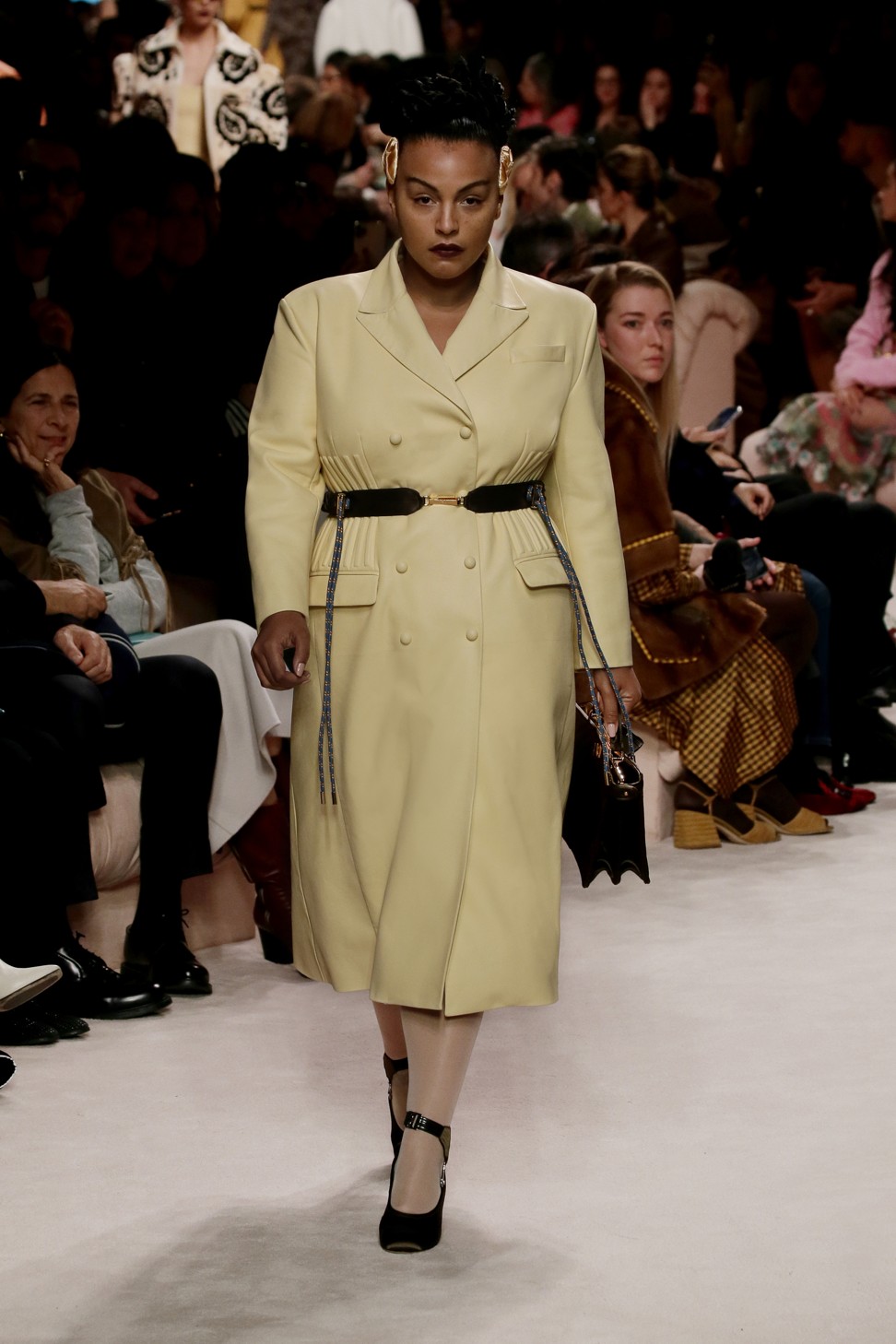
Why Billie Eilish understands body-positivity better than the fashion industry
- The 18-year old singer opened her new tour with a powerful comment on the way women’s bodies are valued
- While more designers are dressing more curvaceous forms, the fashion industry still has a long way to go
A few disparate events have recently put the spotlight back on the fashion industry’s efforts to be inclusive when it comes to sizing. In Paris, celebration and controversy ensued when Dutch model Jill Kortleve walked Chanel’s autumn/winter 2020 runway, making her the first plus-sized model to appear for the fashion house since Crystal Renn in 2010.
The gorgeous Kortleve looked more minus than plus as far as I could tell, especially when you consider that the average dress size is 16 to 18 in the United States and 16 in Britain. However, fashion still loves a human hanger, even if luxury groups Kering and LVMH banned models below a US size 2 or under 16 years old from their shows beginning in 2017. Over at Fendi’s autumn/winter 2020 show in Milan, history was apparently made when plus-sized Paloma Elsesser was cast alongside Kortleve. Were we supposed to clap?
Watch a video from Billie Eilish’s tour below. Warning: contains strong language.
Around the same time in Miami, Billie Eilish released a poignant video at the kick-off of her world tour. The singer, who has hidden her body beneath baggy apparel to avoid being sexualised or body-shamed, removed layers of clothing and asked: “Would you like me to be smaller? Weaker? Softer? Taller? … The body I was born with, is it not what you wanted?” Then, “Is my value based only on your perception?” The answer, sadly, has all too often been yes for many women for generations.
In Western civilisations, curvaceous female forms were once exalted as the epitome of beauty. Plus-sized was the right size from the Venus of Willendorf (circa 25,000BC) and the Venus de Milo (100BC) all the way through to The Three Graces (1630-35) by Peter Paul Rubens. But by the 16th century, the tyranny of shapewear had well and truly taken hold in Europe. Extreme bust-waist-hip ratios could only be achieved in real life with the use of corsets.
Since then, the ideal female form has been on a yo-yo diet. The introduction of the bustle in the 1870s shifted attention to the rear, with an accentuation of the bottom that was not to be seen again until the Kardashians burst onto the scene in 2007. In the 1890s, it swung back to reflect artist Charles Dana Gibson’s era defining illustrations of wasp-waisted “Gibson Girls”.
Curves did not serve well during the 1920s though, when a straight up and down flapper body, like that of a prepubescent boy, was all the rage. Indeed, women required girdles to make those hips disappear – they were no longer considered beautiful.
During the 30s, waists and hips were back in vogue and remained so through the 50s, as epitomised by Marilyn Monroe. This was also the time when cosmetic surgery was added to the toolbox. Just a decade later a flapper-like look returned with the advent of model Twiggy. From the diet and exercise-obsessed 70s to the skinny but, ahem, pneumatically enhanced 80s and the waiflike heroin chic of the 90s, the shape of “beautiful” continued to transform.

Throughout the modern era, fashion has chosen to present collections using impossibly skinny models, despite the fact that sales show women of all sizes buy them. It was not until the 2010s that size inclusivity gained traction, propelled by body positive messages on social media. In 2014, Rick Owens hired step dancers of all shapes and sizes to present his clothes.
In 2015, Robyn Lawley became the first plus-sized model to feature in a Sports Illustrated swimsuit issue. Ashley Graham, another plus-sized model, secured the cover the following year. Recently, we have seen plus-sized models walk for Sies Marjan, Michael Kors, Valentino, Alexander McQueen, Prabal Gurung, Chromat and more brands besides.
It’s a smart new direction commercially, but also artistically. Contrary to popular belief, clothes don’t look better on hangers – there is an ideal body type to accentuate the genius of every design. In untangling the expectations that Barbie and Vogue have created, we need to stop viewing our bodies as fashion. My value is not based on your perception.
Now, I am taking myself out for a hike.

